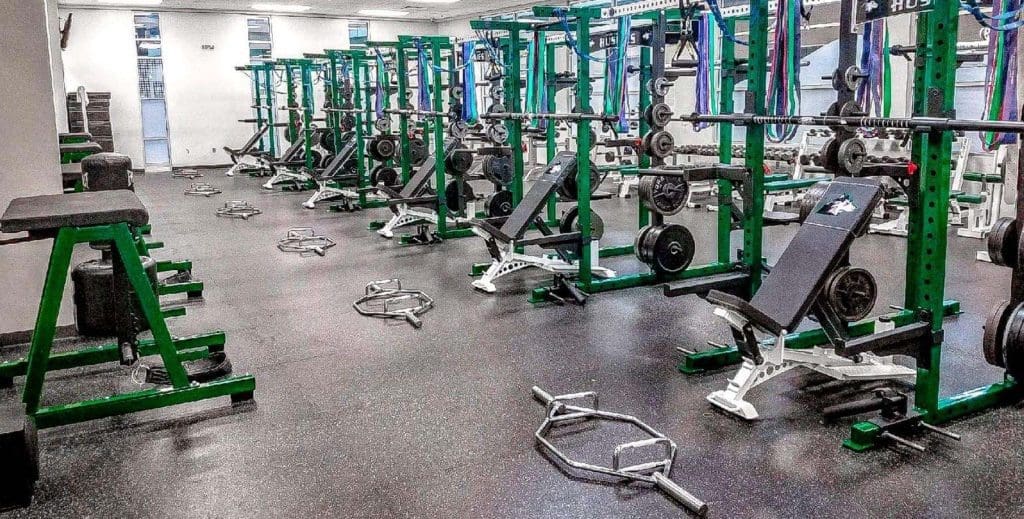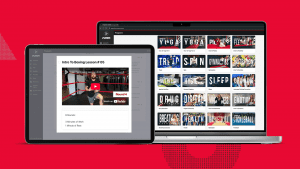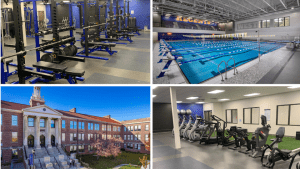Personalized Learning in Mixed Physical Education Classes
The make-up of a typical Physical Education class is often described as a ‘mixed bag.’
And it is a big bag. Classes consist of over 40 students, spanning across 4-grade levels, all with a variety of experiences and interests in fitness or weight training.
These big classes are paired with the call to action for teachers to provide personalized learning experiences for all students.
While teachers may dream of personal 1-on-1’s and consultative meetings with each student before the semester starts, they know that they need to have a structured plan from the start.
At North High School in Evansville, Indiana, Billy Hewig has a plan, process, and purpose for his mixed Physical Education classes.
The Plan:
While assigning a training program that meets the needs and interests of each student may seem daunting, Coach Hewig simplifies his class into three major groups.
Level 1: No Weight Room Experience – No Fitness Background
Are students able to perform foundational human movements like the squat, hinge, lunge, press, and pull? If the answer is no, or even “I don’t know,” then Level 1 is the clear choice.
In the words of PLT4M’s Director of Performance Sam Breslin, “Do not confuse age or athletic triumphs with fitness experience.”
Anyone in Level 1 is assigned PLT4M’s 101 and 102 programs. These programs introduce students to general fitness while focusing on proper form, technique, and safety.
The goal is quite literally to establish a strong foundation. Any student, whether they participate in sports or not, needs this foundation to be able to advance to level 2.
Level 2: Moderate Weight Room Experience – Some Fitness Background
Are students ready to use a barbell, but have not established maxes in any barbell movement? If the answer is yes, then Level 2 is the clear choice.
Level 2 applies to students who have already completed Hewig’s Level 1 in a previous semester or for students who have had some type of foundational movement training elsewhere.
Some students come to Hewig’s class, having done the basics with a sports team or through another class, and are ready to start in on the barbell movements. While Hewig is not racing to get anyone past Level 1, he does keep it as an option if appropriate.
Students in Level 2 are assigned to get through PLT4M’s 200 level programs, which introduce Power and Olympic lifts. From here, they will start to develop an extensive range of movements and exercises. The goal here is to reinforce the foundation and grow the second layer in their training with barbells and weights.
Level 3: Solid Weight Room Experience – Fitness and Strength Training Background
Because students have a strong foundation from Level 1 and 2, their training is now determined by their own goals. In Level 3, more program options allow students to begin to guide their training independently.
Some students, not on sports teams, continue to seek personal improvement through more advanced fitness program options, while student-athletes have the choice between in and off-season training.
For North High Scool, Level 3 typically consists of athletes who will participate in the off-season or in-season training programs. Sports coaches and Hewig work together throughout the year to modify the volume and intensity of workouts to reflect the demands of each sport and season.
The Process:
Each class, the students come in and do a general warm-up together. The goal is for all students, regardless of level, to spend time together. And by doing so, they can build relationships before heading off into the ‘meat and potatoes’ of their individualized workouts.
After the warm-up, each level starts to kick off the main workouts they are assigned via PLT4M. Hewig pays closer attention to Level 1 and Level 2, while Level 3 can operate more independently through the app.
Students have access to videos and training tips through the PLT4M app, but Hewig stays vigilant in teaching new exercises.
“Anytime my Level 1 or Level 2 students are learning something new, I am teaching them the ins and outs. I never say, ‘Go watch that squat video and learn to squat.'”
Since Hewig is spending his time teaching the new movements, the videos come in handy when kids might need a reminder or review. Many North HS students will refer to the videos to remind themselves how to perform specific movements and exercises.
And while Level 1 and 2 are learning and working through new movements, the more advanced students are making their way through in-season or off-season training programs on their own.
While some of the weight and reps are varied based on the individual, Level 3 students can work together cohesively because they have a strong understanding of what needs to get done.
The Tech:
Hewig knew that with such large classes, having to print weekly workouts was not going to make for an efficient process.
That is why all North students also log workouts and test results via PLT4M. Students can use phones, Chromebooks, or even a few donated tablets available in the weight room.
No matter if students are on Level 1, 2, or 3, they can enter data and results that allow for personal accountability and coach and teacher insights. Technology helped to align the plan and process for North’s overall purpose.
The Purpose:
The plan and process might have its variations for different groups, but the purpose is all-encompassing: Meet each student where they are in training and help them get better.
Through a unified strength and conditioning program, North has students and coaches all working together to build and grow from level to level. With an established plan and process now in action, over 400 students come to the weight room throughout the day.
Hewig has taken the mixed bag and made it a bag full of success. Students are growing from semester to semester, coaches and teachers are on the same page, and they have the numbers on PLT4M to back it all up.
While some might write off the possibility for personalization in large classes, North High School in Evansville is embracing the power of personalization for its ‘mixed bag’ of students in the weight room.








